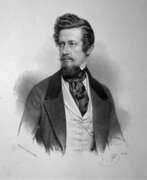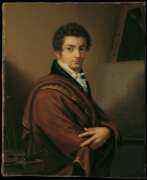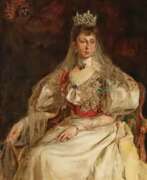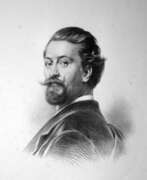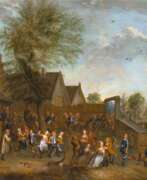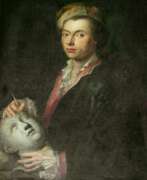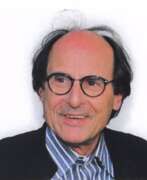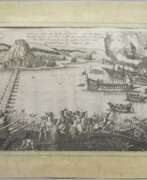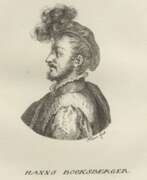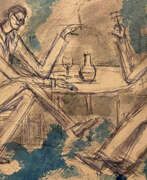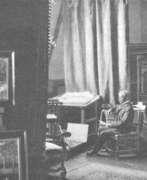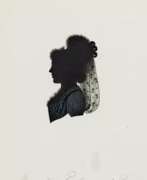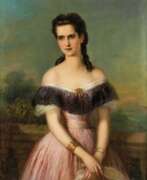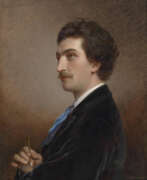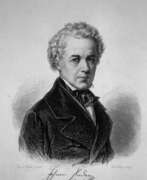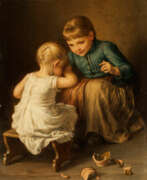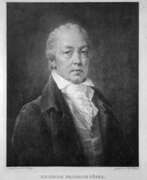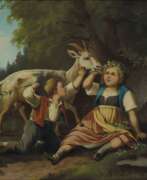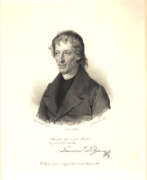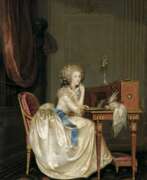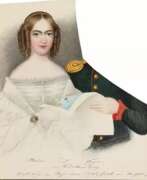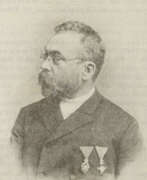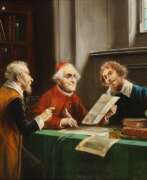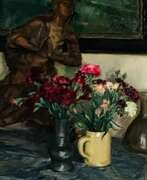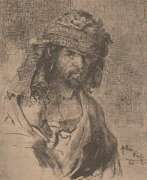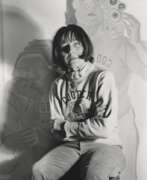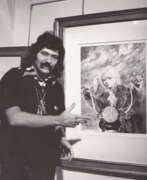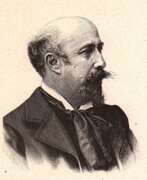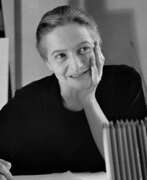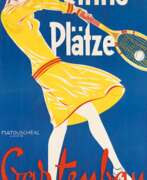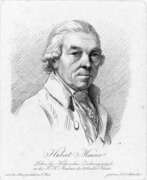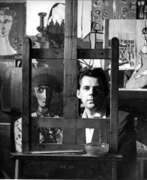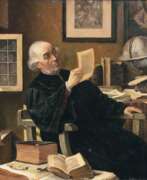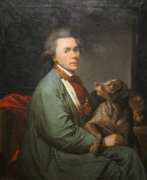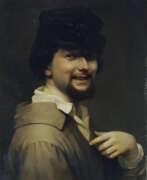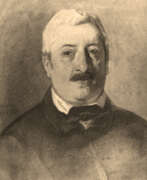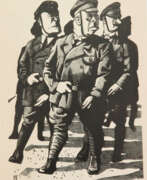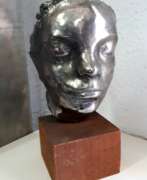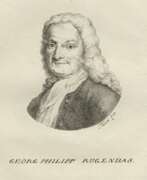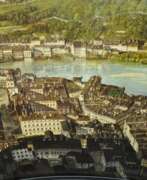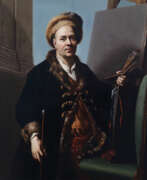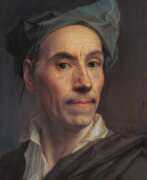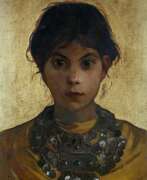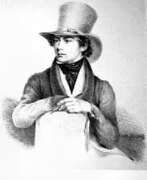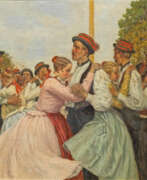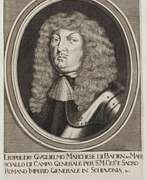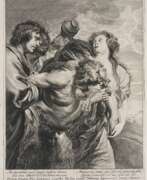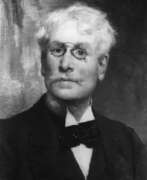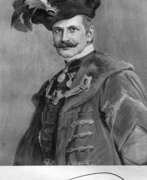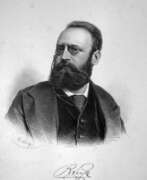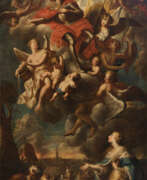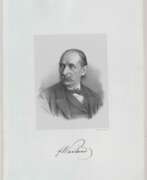Portraitist Austria
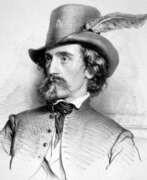

Joseph Matthäus Aigner was an Austrian portrait painter, who studied under Friedrich von Amerling and Carl Rahl. He painted portraits of Franz Joseph I of Austria and his wife Elizabeth, Franz Grillparzer, Friedrich Halm, Nikolaus Lenau, and Maximilian I of Mexico.
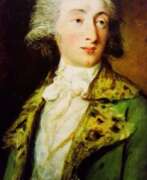

Carl Daniel David Friedrich Bach was a German artist of the late eighteenth and early nineteenth centuries, the Baroque period. He is known as a painter, graphic artist and printmaker.
Bach worked in the historical genre, was a portraitist, animalist, created canvases on allegorical subjects in the spirit of his era. In his works he combined elements of baroque and classicism. The artist often worked in the etching needle technique.
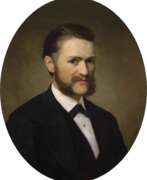

Eduard Charlemont was an Austrian painter.
After graduating from the Academy of Fine Arts Vienna, Charlemont traveled to many countries in central Europe and finally settled in Paris. In 1899 he won the gold medal at the Exposition Universelle, a World's Fair held in Paris.
Charlemont was also known for his murals. He painted three of the murals of the Burgtheater (the Austrian National Theatre in Vienna and one of the most important German language theatres in the world) totaling a length of about 55 meters.


Georg Dinz is a contemporary Austrian artist. After studying at the Vienna University of Applied Arts, Dienz lives and works as a room and stage designer in the Viennese punk scene. Shortly after the fall of the Wall, Dienz moves to Berlin, where he takes part in various art projects in the wild post-reunification period. Today he concentrates on free painting in his studio in the former Berlin artist district of Prenzlauer Berg. Georg Dienz's works are stylistically characterized by a flat and clear application of paint and can be described as "reduced realism".
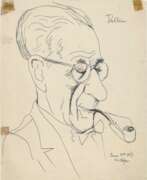

Benedikt Fred Dolbin, born Pollak, an Austrian press illustrator, studied at the Vienna University of Technology and worked for the construction company Waagner, Biro & Kurz during the First World War. He later moved to Berlin, where he worked as a press illustrator and book illustrator. Because of his Jewish origins, he was excluded from the Reich Press Chamber in 1933 and was banned from working in 1935. After emigrating to the USA, Dolbin continued his career His career as a draftsman continued, but he was unable to build on his earlier successes.
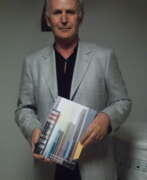

Albert Ennemoser is a contemporary Austrian artist. Traveled extensively throughout Europe, USA, Africa and Asia. In 1972 he immigrated to Ireland, then moved to Scotland. He studied painting at the Glasgow School of Art and Jordanhill College of Education. Worked as an illustrator for BBC-TV-Scotland and as a designer for NAEF in Switzerland. He received several awards and was artistic director of the Tiroler Literaturwettbewerb für Jugendliche. His work has been exhibited both nationally and internationally.


Eugen Felix, born as Veith Ehrenstamm was an Austrian painter.
He started his studies with Ferdinand Georg Waldmüller and continued in Paris with Léon Cogniet. Felix is particularly well known for his portraits, but he also did historic and mythological scenes.


Josef Grassi was an Austrian portrait and history painter. His middle name is usually given as "Maria", although there is evidence that it was actually "Mathias". He is also called "Giuseppe Grassi".
Grassi is best known for his sensitive portraits of women. In his later years, his style became less graceful and settled into a form of academic classicism.
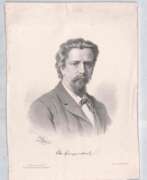

Christian Griepenkerl was an Austro-German painter of the last third of the 19th and early 20th centuries. He is known as a painter and teacher, a professor at the Vienna Academy of Fine Arts.
Griepenkerl created many paintings of historical subjects and themes from ancient mythology, and was also a successful portraitist. As a teacher, he was famous for having twice prevented the young Adolf Hitler from taking the entrance examinations to the Vienna Academy of Fine Arts.
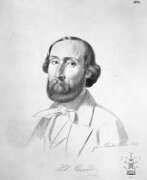

Carl Johann Grund was a German and Austrian genre painter and portraitist.
He studied at the Academy of Fine Arts in Vienna and traveled throughout the Alpine countries and Italy. Johann Grund's works are in the collections of the museums of Karlsruhe, Mannheim, and Vienna.


Robert Hammerstiel, an Austrian painter and engraver born on 18 February 1933 in Vršac, Yugoslavia, was renowned for his profound and impactful art. His works, deeply influenced by his experiences, were widely exhibited in prominent cities like New York, Vienna, Cairo, and Brussels.
Hammerstiel's journey in the art world was notable for its depth and variety. In 1988, he transitioned to a full-time artistic career, leaving behind his work in the steel industry. This shift marked a new phase in his life, allowing him to fully dedicate himself to his art. One of his significant works includes "Von Ikonen und Ratten: Eine Banater Kindheit 1939 – 1949," which comprises 32 woodcuts, highlighting his skill in both writing and visual arts. His talent was recognized with several prestigious honors, including the Austrian Decoration for Science and Art in 1998 and the Austrian State Prize for Graphics in 1973.
Hammerstiel's art was not just limited to traditional formats; in 2007, he impressively wrapped the Ringturm in Vienna with a 4,000 square meter painting. His works are a part of various collections and have been displayed in significant exhibitions. Notably, the Leopold Museum in Vienna featured his graphic work in an exhibition titled "Winterreise", inspired by Schubert's song cycle, showcasing a series of drawings and woodcuts.
Robert Hammerstiel's influence in the art world extended beyond his lifetime, culminating in his birth town dedicating a museum to his works in 2010. His passing on 23 November 2020 marked the end of an era but left behind a rich legacy that continues to inspire artists and art lovers globally. His work is a testament to the power of art in expressing the complexities of human experiences and emotions.
For collectors, auctioneers, and experts in art and antiques, the works of Robert Hammerstiel offer a unique blend of cultural richness and profound artistic expression. His art, characterized by its emotional depth and technical skill, continues to hold a special place in the world of fine arts.
To stay informed about exhibitions, sales, and auction events related to Robert Hammerstiel's art, sign up for updates. This subscription will keep you updated on new opportunities to engage with the work of this influential Austrian artist.


Sigmund Walter Hampel, born in Vienna in 1867 and passed away in 1949 at Nußdorf am Attersee, was an esteemed Austrian painter and draughtsman. The son of a glass painter, Hampel honed his artistic skills and knowledge of design, material, and technique in his father's workshop. His formal education at the Vienna Academy of Art under notable figures like August Eisenmenger and Heinrich von Angeli further refined his abilities, especially in delicate coloring and technical proficiency.
A significant period of Hampel's career was his membership in the Hagenbund, a Vienna-based artists' association, from 1900 to 1911. This association was known for its avant-garde approach and played a critical role in shaping modern art in Austria. Hampel's works are recognized for their diverse range of subjects and styles, including figurative works, still life, and portraiture.
Some of Hampel's notable works include "Interieur" (1903), "Zimmer In Einem Alten Forsthaus" (1905), "Spanische Tänzerin (Porträt der Mlle E.)" (1904), "Blumenstillleben" (1910), and "Der Zwerg und das Weib" (1902-1903). These artworks exemplify his versatile approach to art, capturing a range of emotions and narratives through his distinct artistic style.
Hampel's contributions to the art world, particularly in Austria, are significant. His works continue to be appreciated by art enthusiasts, collectors, and experts in art and antiques for their aesthetic value and historical significance.
To stay updated on the latest information, sales, and auction events related to Sigmund Walter Hampel, sign up for our newsletter. This subscription will provide regular updates exclusively about new opportunities related to Hampel's works, ensuring you don't miss out on any significant developments in this area.
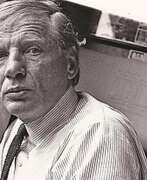

Rudolf Hausner was an Austrian painter, draughtsman, printmaker and sculptor. Hausner has been described as a "psychic realist" and "the first psychoanalytical painter".
A characteristic of his painting technique is the use of translucent ("glazing") resin oil paints in more than ten layers on top of each other over underpainting of acrylic paints, which gives the paint a special luminous depth. He also developed methods to create flawless transitions in pure oil painting without the use of an airbrush.
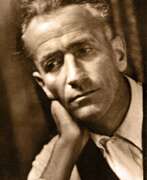

Louis Christian Hess was an Austrian painter and sculptor of the German Neue Sachlichkeit (New Objectivity) during the 1920s. In 1915 Hess exhibited his first works - drawings, tempera and engravings - at the "Turn und Taxishof Galerie" in Innsbruck. After the war, from 1919 to 1924 he attended the Bayerische Akademie der Bildenden Künste in Munich, in the class of Prof. C. Becker-Gundhal. In 1920 Hess attended the first collective exhibition "Ausstellung Junger Münchner - Graphische Kunstwerkstätten" in Munich presented by George Jacob Wolf. In 1928 he became close to Max Beckmann until his exile. Hess participated in the "Sommer Ausstellung des Deutschen Künstler Verbandes AUFBAU - E. V." in Munich and some of his paintings were shown in Berlin. In 1929 he joined the "Juryfreie" movement, becoming its leader until his ban in 1933 by the National Socialist regime. The artistic ostracism practised by Nazism moved Hess to a voluntary exile.
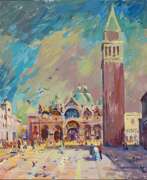

Konrad Honold was a painter, restorer, graphic artist, and heraldist. He began his artistic career at a young age, apprenticing in a painting workshop in Ravensburg. He furthered his training at Toni Kirchmayr's art school in Innsbruck and the Academy of Fine Arts in Berlin. Honold settled in Schruns, Austria, where he worked as a painter and restorer. His works included panel paintings and designs for various mural techniques, focusing mainly on sacred art. He also contributed to the preservation and restoration of church spaces, continuing the tradition of church painting. Honold was involved in heraldry, creating coat of arms for the Vorarlberg State Government and various municipalities in the region. He was an active member of the Montafon Heritage Association and played a crucial role in establishing the Montafon Heritage Museum in its current location.


Leopold Stefan Horowitz was a Polish painter of the second half of the nineteenth and early twentieth centuries of Jewish origin. He is known as a portrait painter and genre painter.
Horowitz early in his career, in 1860, settled in Paris, where he became a well-known painter of genre paintings and portraits, especially of children. In his work he imitated the style of Rembrandt and later Van Dyck. In 1868, the artist moved to Warsaw, traveling frequently to Budapest, Vienna and Berlin to paint commissioned portraits of ladies from aristocratic circles. In Warsaw he produced paintings depicting life in the Jewish diaspora. In 1891 Horowitz settled in Berlin, where his brilliant technique and elegant style in the spirit of the old masters made him a popular portraitist among the local aristocracy.


Olaf Jordan was a German and Swedish painter of the first half of the twentieth century. He is known as a portrait painter.
Jordan was attached as a war artist to the collaborationist SS Cossack Cavalry during World War II and created many portraits of Cossacks. Some of his work was confiscated by the Americans, who judged the drawings to be apologia for the Nazi regime. Jordan himself remained in Soviet captivity until 1947, after which he moved to Sweden, where he painted mostly portraits of children. Before the war, he worked on a series of depictions of Yugoslav folk types.
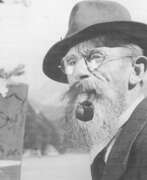

Toni Kirchmayr was an Austrian painter and restorer. He received his first artistic training from the native painter and poet Alfons Siber. He then took lessons in ornamental and fresco painting from the fresco painter Rafael Thaler in Innsbruck until 1903 and completed a further year at the private painting school Moritz Weinhold in Munich. On 1905 he started studying at the Academy of Fine Arts in Munich. He was headmaster of the Heymann painting school, did decorative and decorative arts painting for publishers and worked as an assistant to church painters and restorers in the summer, which gave him knowledge of fresco painting. He had to interrupt his studies in 1908/1909 for military service. After completing his studies in 1910, he settled in Innsbruck as a freelance artist. Shortly after the end of the First World War, in January 1919, he founded the Toni Kirchmayr School of Painting and Drawing in Innsbruck, which existed until his death and became the most important artistic training centre in Tyrol. Toni Kirchmayr created a versatile oeuvre ranging from landscapes, interiors and still lifes in oil to ornamentation and decorative art and large-format wall and ceiling frescoes. The landscape painting shows modern, colour-expressive features. Kirchmayr showed a special talent as a portraitist.
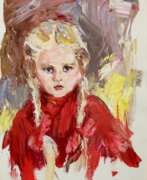

Oswald Kollreider is an Austrian painter. After completing his compulsory education, he apprenticed as a painter in Sillian. In 1940, he was drafted into the Wehrmacht and was severely wounded on the Eastern Front in 1943, losing two fingers on his right hand. Despite his disability, Kollreider passed the entrance exam for the Academy of Fine Arts in Vienna in 1944. He furthered his studies at the Mal- und Zeichenschule Toni Kirchmayr in Innsbruck and later at the Vienna Academy. Kollreider's works encompass portraits, particularly depicting the working class and rural life, as well as nudes, landscapes, floral paintings, and religious motifs in various mediums. He also created numerous public artworks, notably Sgraffito.
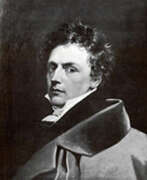

Johann Peter Krafft was a German and Austrian painter of the mid-nineteenth century. He is known as a painter and graphic artist who specialized in genre, battle, portraiture and history painting. Krafft is believed to have had a significant influence on Austrian painting and was a leading portraitist of the Neoclassical style in Vienna. He later influenced the development of genre painting during the Viennese Biedermeier period.
Krafft co-founded the Vienna Artists' Union and was elected to the council of the Vienna Academy of Art in 1835. The artist also acted as a consultant for the protection of cultural monuments at Karlstein Castle in Bohemia.
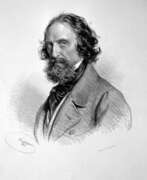

Josef Kriehuber was an Austrian lithographer and painter, notable for the high quality of his lithographic portraits. He made numerous portraits for nobility, well-known personalities, and government officials. Josef Kriehuber left more than 3000 lithographs, with portraits of many people.


Adolf Luntz was a German painter, etcher, and lithographer, was known for his landscapes and figurative works. Inspired by his architect father, Viktor Luntz, Adolf joined the Vienna Academy of Fine Arts in 1892. After studying in Vienna until 1897, he became a master student of Gustav Schönleber at the Karlsruhe Academy of Fine Arts. Luntz accompanied Schönleber on various study trips and designed collectible images for the Stollwerck company in Cologne. He settled in Karlsruhe in 1905 and was a member of the German Artists' Association.


Kaspar Heinrich Merz was a Swiss draftsman and copper and steel engraver. From 1821, with the help of "a few patrons", he was "apprenticed" to the copper engraver Johann Jakob Lips in Zurich for four years. He also worked as an engraver for the magazine Historical Entertainment. Merz had also acquired a reputation for his color engravings, some of which he created over years of individual work.


Franz Xaver Messerschmidt was an 18th-century Austrian sculptor. He is known as a master of the grotesque and caricature. Messerschmidt became famous after his death. During his lifetime his contemporaries considered him at best an extravagant freak, and at worst mentally ill, although no documentary evidence of the sculptor's mental illnesses has yet been found.
Franz Xaver Messerschmidt was an adherent of Classicism at the initial stage of his work. But then the artist decisively abandoned the principles of classical art. He became famous for making a large series of busts, which the sculptor himself called "heads". The faces of the characters in these works are distorted by all kinds of grimaces and display vivid human emotions. All in all Messerschmidt managed to produce more than 50 heads, which during his lifetime did not arouse the interest of potential customers.
In January 2005, the Louvre acquired one of the "heads" at an auction Sotheby's for a record price of 4 800 000 U.S. dollars.


Carl Moll, full name Carl Julius Rudolf Moll, was an Austrian painter of the Art Nouveau era.
Moll studied at the Vienna Academy of Fine Arts, in 1897 he was active in the creation of the Vienna Secession, and in 1903, thanks to Carl Moll, the Modern Gallery, now called the Austrian Gallery Belvedere, was established. He also worked hard to promote the work of Gustav Klimt and Vincent van Gogh in Germany.
In the early thirties Carl Moll joined the National Socialists and became a staunch supporter. In 1945, when the Soviet troops were approaching Vienna, Carl committed suicide.
In the history of art he remained as the author of bright landscapes and still lifes. Carl Moll is still one of Austria's most prominent artists.


Anton Eduard Müller was an Austrian artist known for his contributions to painting, art, culture and history. Born and died in Vienna, he represents the rich artistic tradition of Austria in the second half of the 19th century. Anton Müller received a small gold medal at the annual exhibition in Berlin in 1886.
His works, which may be exhibited in museums and galleries today, reflect the cultural dynamics of his time and offer insights into the aesthetic preferences and social realities of the late 19th century.
As a painter, Müller may have explored a variety of subjects, from portraits to still lifes, showing the versatility and depth of his artistic skills. Today, his artworks may appeal to collectors and art experts interested in Austrian art history.
For all art lovers and collectors interested in Anton Eduard Müller and his works, we recommend registering for updates. Stay informed about new sales and auction events related to Anton Eduard Müller. Don't miss the opportunity to become part of the fascinating world of art and antiques.
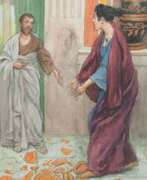

Felician Myrbach, an Austrian artist renowned for his multifaceted contributions to the art world, was a significant figure in the late 19th and early 20th centuries. Born in Zalesciki, Ukraine, in 1853, Myrbach's career spanned various roles, including painter, illustrator, and graphic artist. His educational journey included teaching at the cadet school in Vienna and studying at the Vienna Academy. In 1881, he moved to Paris to further his career as an illustrator, eventually becoming a professor of Illustration at the Vienna School of Arts and Crafts from 1899 to 1905.
Felician Myrbach's artistry was not confined to one location; he lived and worked in multiple European cities, including Paris, Barcelona, and near Bilbao, before passing away in Klagenfurt, Austria, in 1940. His works were displayed in prestigious exhibitions, such as the Vienna Secession shows and the Royal Watercolour Society in Belgium, showcasing his versatility and the broad appeal of his art.
Felician Myrbach's contributions to book illustration were notable, with his work appearing in various publications, such as Alphonse Daudet’s "Wives of Men of Genius" and "Trente ans de Paris à travers ma vie et mes livres." His distinctive signature can be found on many illustrations, underscoring his significant role in the art of book illustration during his time.
For collectors and experts in art and antiques, Felician Myrbach's works offer a glimpse into the vibrant art scene of his era, reflecting the cultural and artistic movements of the time. His legacy continues to be celebrated and studied, making him a pivotal figure in the history of European art.
For those interested in staying updated on Felician Myrbach, subscribing to updates can be a valuable way to stay informed about new product sales and auction events related to his work. This subscription service is dedicated to providing focused updates, ensuring that enthusiasts and collectors are well-informed about opportunities related to Myrbach's enduring legacy.


Paul Mathias Padua was a German painter. He felt committed to the tradition of Wilhelm Leibl, a realist who was highly esteemed by Adolf Hitler, and was extremely successful as an artist during the National Socialist era.


Sergius Pauser, an Austrian painter, gained international recognition in the 1930s, receiving prestigious awards such as the Carnegie Exhibition Prize in Pittsburgh. After studying architecture, he switched to painting and was influenced by Max Beckmann, Otto Dix, and Karl Hofer. However, his career was halted by the Nazi regime. Adolf Hitler personally tore down Pauser's paintings, deeming them degenerate art. Pauser was banned from exhibiting and labeled politically unreliable. He ended up in a concentration camp but was later rehabilitated and reinstated as a teacher at the Academy of Fine Arts in Vienna. Despite controversy, he painted the official picture commemorating Austria's sovereignty.


Hanns Pellar was an Austrian painter and illustrator. He studied painting at the Vienna Academy of Fine Arts under Heinrich Lefler.
Hanns Pellar was one of Munich's most prominent painters, whose quality craftsmanship and very pleasing images were characteristic of the Prince Regent's era. As a "favourite of various respected Darmstadt families", he produced a large number of portraits, especially of ladies, which eventually earned him the nickname "painter of elegance".


Karl Rahl was an Austrian painter renowned for his contributions to art and culture. Rahl was a prodigious talent, evident from his early achievements at the Academy of Fine Arts Vienna. His travels across Europe, especially his time in Italy, profoundly influenced his artistic style, particularly his views on color and perspective.
Karl Rahl's work is celebrated for its depth and diversity, encompassing everything from portraits to monumental frescoes. His commissions for the Fleischmarkt Greek Church in Vienna and his decorations for the Heinrichshof and Palais Todesco are testaments to his versatility and skill. Karl Rahl's influence extended beyond his creations; his private art school in Vienna nurtured a generation of artists who continued his legacy.
Notably, Karl Rahl's artistic contributions also reached the academic realm, with his paintings adorning the Athens Academy and the National and Kapodistrian University of Athens, adding a cultural richness to these institutions. His dedication to his craft persisted until his last years, leaving a lasting impact on the Vienna Opera with his scenic backdrops.
For art collectors and experts, understanding Karl Rahl's work offers insights into a pivotal period in art history, where the interplay of culture, history, and individual genius shaped the visual narrative of the time. To stay updated on new product sales and auction events related to Karl Rahl, consider signing up for updates to deepen your appreciation and knowledge of this influential artist.
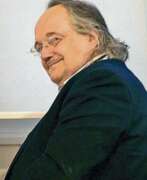

Joseph Gallus Rittenberg is an Austrian photographer, stage designer and painter. Rittenberg grew up in Gallneukirchen and has lived in Munich since 1977. His photographs have been shown at exhibitions in Berlin, Paris, Vienna and New York, among others, and have also been published in magazines (e.g. Süddeutsche, Die Zeit and Der Spiegel) since the 1980s. His work focuses on portraits. His photographs of the writers Thomas Bernhard and Werner Schwab, Friederike Mayröcker and Ernst Jandl became well known.
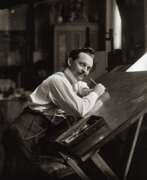

Ferdinand Schmutzer, a distinguished Austrian printmaker, photographer, and portrait painter, hailed from a rich artistic heritage in Vienna. With his great-grandfather, Jacob Matthias Schmutzer, having founded the esteemed "k.k. Kupferstecher-Academie," creativity ran deep in his family. Following in the footsteps of his grandfather and father, Ferdinand initially explored sculpture but later honed his skills in painting at the renowned Vienna Academy. A transformative study trip to the Netherlands sparked his fascination with etchings, inspired by the works of Rembrandt van Rijn. Soon, his exquisite portraits of Vienna's elite garnered widespread acclaim, with prominent figures like Sigmund Freud, Albert Einstein, Kaiser Franz Josef, the Vienna Philharmonic, and Karl Lueger posing for him.
Notably, Schmutzer's art transcended borders, as he exhibited internationally and received numerous awards and accolades. Pioneering the use of larger formats in etching, he pushed the boundaries of the art form, bringing innovation to the technique. Becoming a member of the Vienna Secession in 1901 and later a professor at the Academy of Fine Arts Vienna in 1908, Schmutzer's impact on the art world was undeniable. His legacy lives on, inspiring future generations of artists, and he remains an iconic figure in Austrian art history.
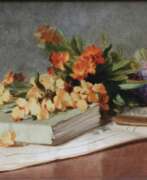

Gottlieb Schuller was an Austrian glass painter and mosaic artist. Schuller attended the Bundesgewerbeschule in Innsbruck in the art classes of the painters Heinrich Comploj and Toni Kirchmayr. From 1897 he worked at the Tyrolean Glass Painting and Mosaic Institute on Müllerstrasse in Innsbruck. From 1919 to 1944 Gottlieb Schuller was the artistic director of the Tyrolean Glass Painting and Mosaic Institute. Gottlieb Schuller found his own formal language in the form of a romantic naturalism combined with expressive elements.
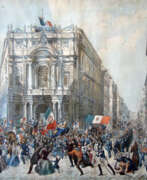

Franz Wenzel Schwarz was a German-Bohemian painter of the second half of the nineteenth and early twentieth centuries. He is known as a portrait painter, master of historical genre and glass artist.
Schwarz created many portraits of churchmen, scholars, high officials, major businessmen, as well as children and women. He also created many religious paintings and stained glass windows for churches. He was a member of the Society of Artists of Vienna and other artistic associations. In the later part of his career, Schwarz concentrated on creating genre and portrait paintings, selling them to various countries, including America and Russia. Between 1912 and 1918, he copied paintings from the Old Masters Picture Gallery in Dresden.


Rosa Schweninger is an Austrian artist, a member of a Viennese family of artists that included her father, Karl Schweninger the Elder, and her brother, Karl Schweninger the Younger. Rosa's work includes portraits and floral compositions.


Alfons Siber, an Austrian painter and restorer, began his artistic journey as an apprentice at the Tiroler Glasmalerei-Anstalt in Innsbruck. He studied at the Academy of Fine Arts in Vienna and received several awards and scholarships. Siber settled in Hall in Tirol, where he worked as a painter and restorer. He founded the Tiroler Künstlerbund and created numerous portraits, landscapes, and large-scale church murals. Siber also carried out restoration projects.


Norbert Strolz was an Austrian artist who studied church painting with Toni Kirchmayr in Innsbruck. He studied at the Vienna Academy of Fine Arts with Franz Elsner and Herbert Bekl, and received a scholarship to study at the Academy of Fine Arts in Florence in 1953/54 under Otton Rosai. In 1965 he had his first solo exhibition at the Tiroler Kunstpavillon in Innsbruck. From 1960 he worked as a freelance artist in Landeck. He co-founded the Landeck District Museum Association and was its chairman from 1971 to 1990. He created many ceramics, frescoes, sgraffito and mosaics, especially in public buildings as part of the post-war Art in Architecture programme in Tyrol.
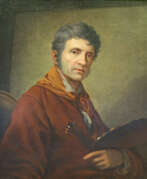

Johann Baptist von Lampi was an Austrian-Italian portrait painter renowned for his influential style and significant contributions to the art world. Born in 1751 in Romeno, Tyrol, Lampi’s career took a pivotal turn when he moved to St. Petersburg in 1791. There, he received a hereditary knighthood from the Empress and became a sought-after portraitist, painting notable figures including Empress Catherine II and Maria Feodorovna.
Lampi’s work is characterized by its vivid realism and meticulous attention to detail, qualities that made him a favorite in the Russian court and later in Vienna, where he returned in 1797. His portraits, often rich in texture and color, capture the essence of his subjects with striking clarity. Notable works include portraits of King Stanisław II August and Countess Zavadskaya, displayed in major museums like the National Museum in Warsaw and the Łazienki Palace.
For those interested in exploring Lampi’s legacy further or acquiring pieces associated with him, staying informed about upcoming sales and exhibitions is essential. Sign up for updates to ensure you don't miss out on important auction events related to Johann Baptist von Lampi’s works.


Franz Walhegger is an Austrian artist, a pioneer of modern painting in Tyrol. Born in Linz. He studied at the school of drawing and painting in Innsbruck, and then at the Vienna Academy of Fine Arts (from 1938 to 1942). During World War II he was drafted into the German army, but continued to paint and create frescoes in Olomouc (Czech Republic). After the war he returned to Linz. He created many works, including portraits, landscapes and paintings on religious themes. Walhegger developed his own style, incorporating elements of naturalism and cubism. The artist left behind a significant creative legacy. His works have been exhibited in various cities and can be found in public collections.
